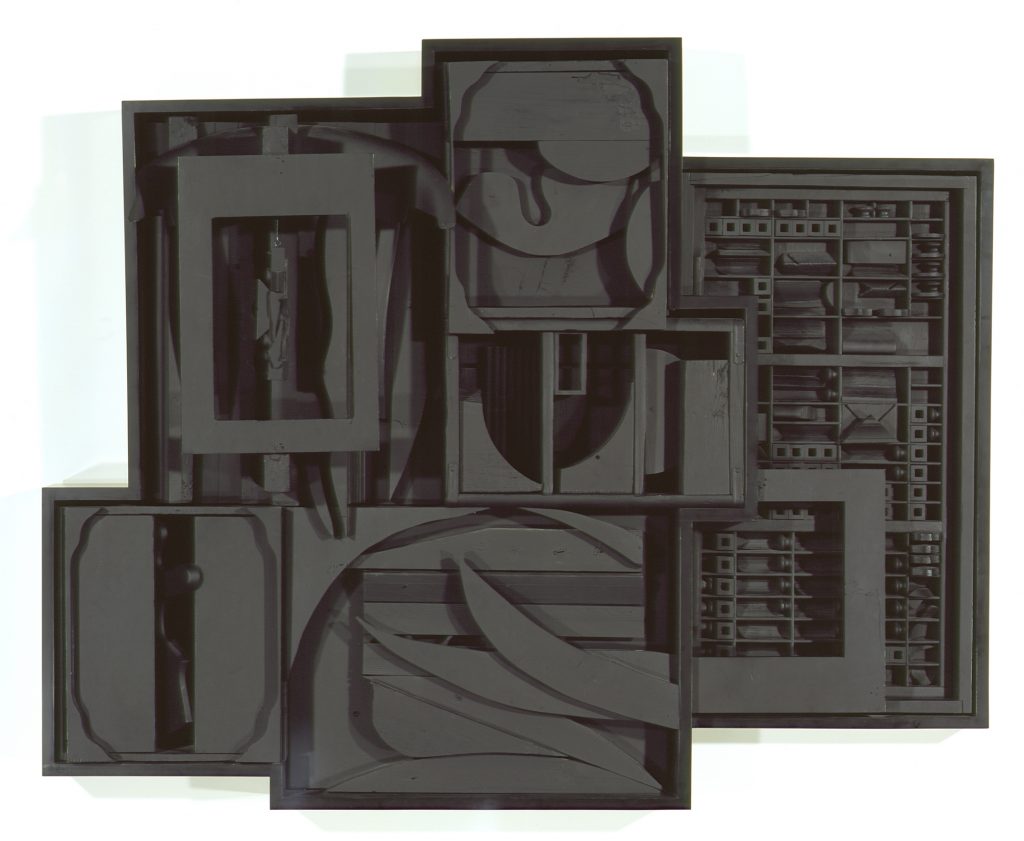Black Zag CC (work of art)
Artwork Info
Key Ideas about this Work of Art
- Artist Louise Nevelson was known for creating unique assemblages. Assemblage is an art form that uses everyday objects and transforms them into something new.
- Nevelson used boxes and small found objects to create the sculptures she called Zags. She spray-painted her sculptures one color (usually black). This gave each sculpture a sense of unity even though it was made from many different pieces.
- Nevelson was one of the most famous women artists of her time. She helped to inspire the feminist art movement. Feminist artists encouraged gender equality in art.
- In the 1930s Nevelson worked as an art teacher. She was funded by the Works Progress Administration (WPA). The WPA was a program that helped fund and create millions of American jobs (including art jobs) to help people who lost their jobs during the Great Depression.
Learn More
Artist Louise Nevelson was inspired by the assemblages of Joseph Cornell. She created unique sculptures that she called Zags by filling boxes with stacked pieces of wood and small trinkets that she had found. She spray painted the Zags a solid color (usually black) to create a feeling of unity. When she was asked about her use of the color black in her sculptures, Nevelson said, “It’s only an assumption of the Western world that it means death. For me it may mean finished, completeness, maybe eternity.” Although Nevelson’s Zags are made up of many separate pieces, the monochromatic color scheme ties the pieces together into a single sculpture.
Nevelson was one of the most famous women artists in the mid-1900s. She helped pave the way for the feminist art movement. This art movement encouraged women to make art about their experiences. It also created opportunities for women artists. Social and economic factors prevented most women from having successful art careers at the time.
Throughout her art career, Nevelson studied and worked with famous artists including Hans Hofmann and Diego Rivera. She also taught art as part of the Works Progress Administration (WPA), a government program designed to help Americans get jobs during the Great Depression. The WPA funded construction projects like roads and bridges. It also gave funding to visual artists, musicians, actors, and writers.
tags: form, shape, pattern, part/whole, change, order, variation
Additional Resources
Resources for Teachers:
- Explore lesson plans designed to teach students about Louise Nevelson and assemblage art.
- Explore educational resources and lesson plans about women in art.
- Read an article about the Works Progress Administration (WPA) and how it helped artists.
Resources for Students:
- Learn more about women artists whose work is featured in the NCMA collection.
- Watch a video about Nevelson and discover what makes her art unique.
- Create an art project inspired by Nevelson.

